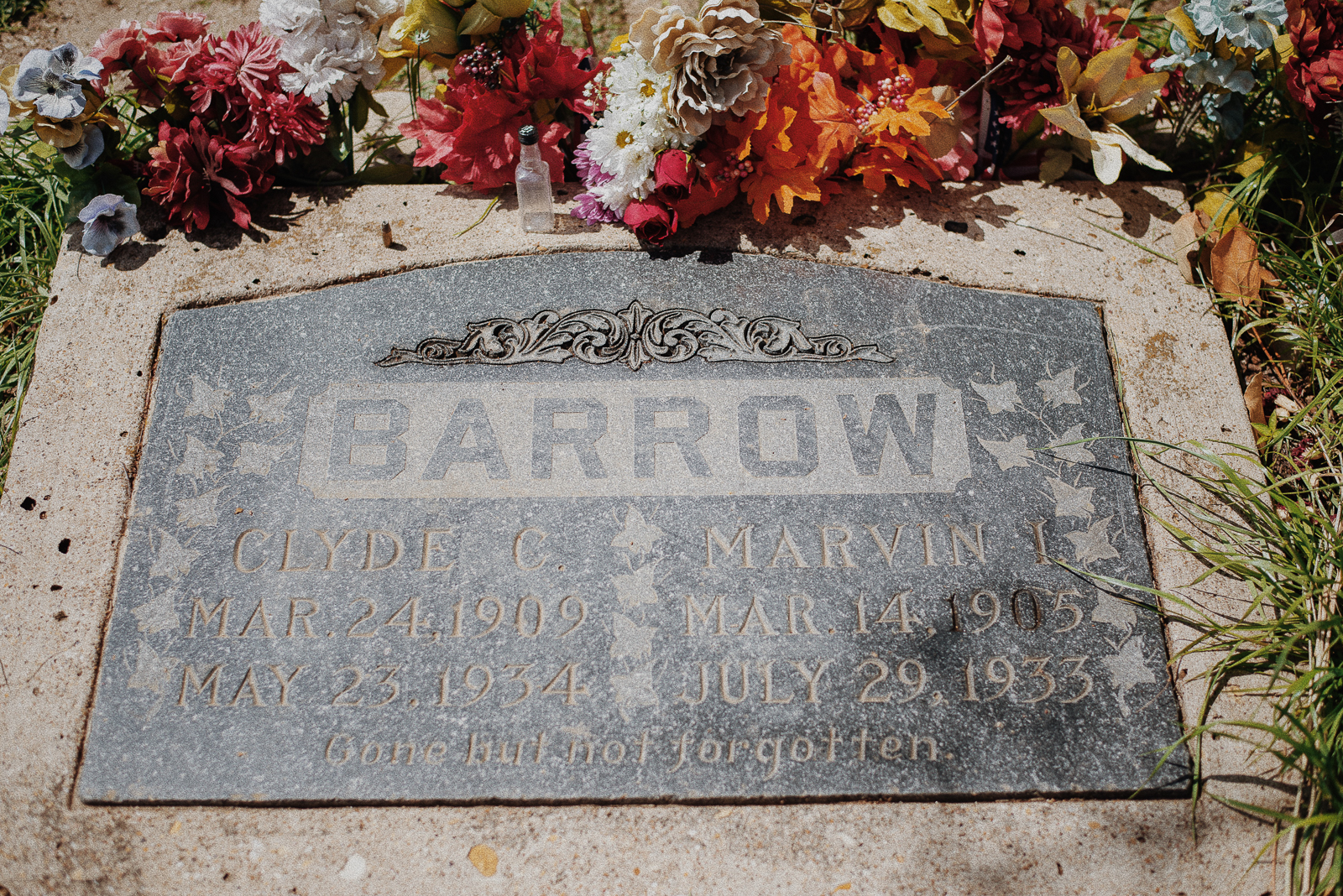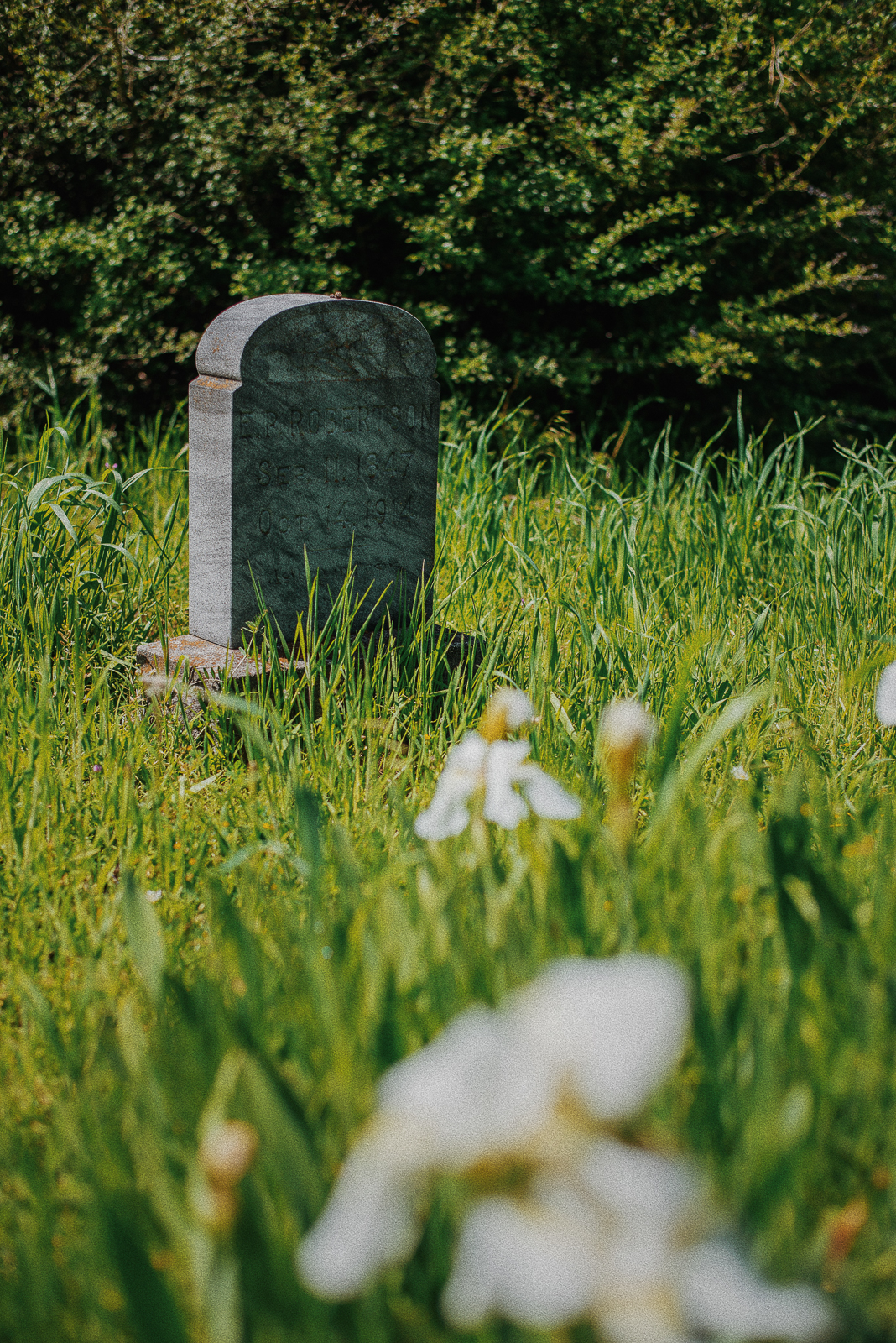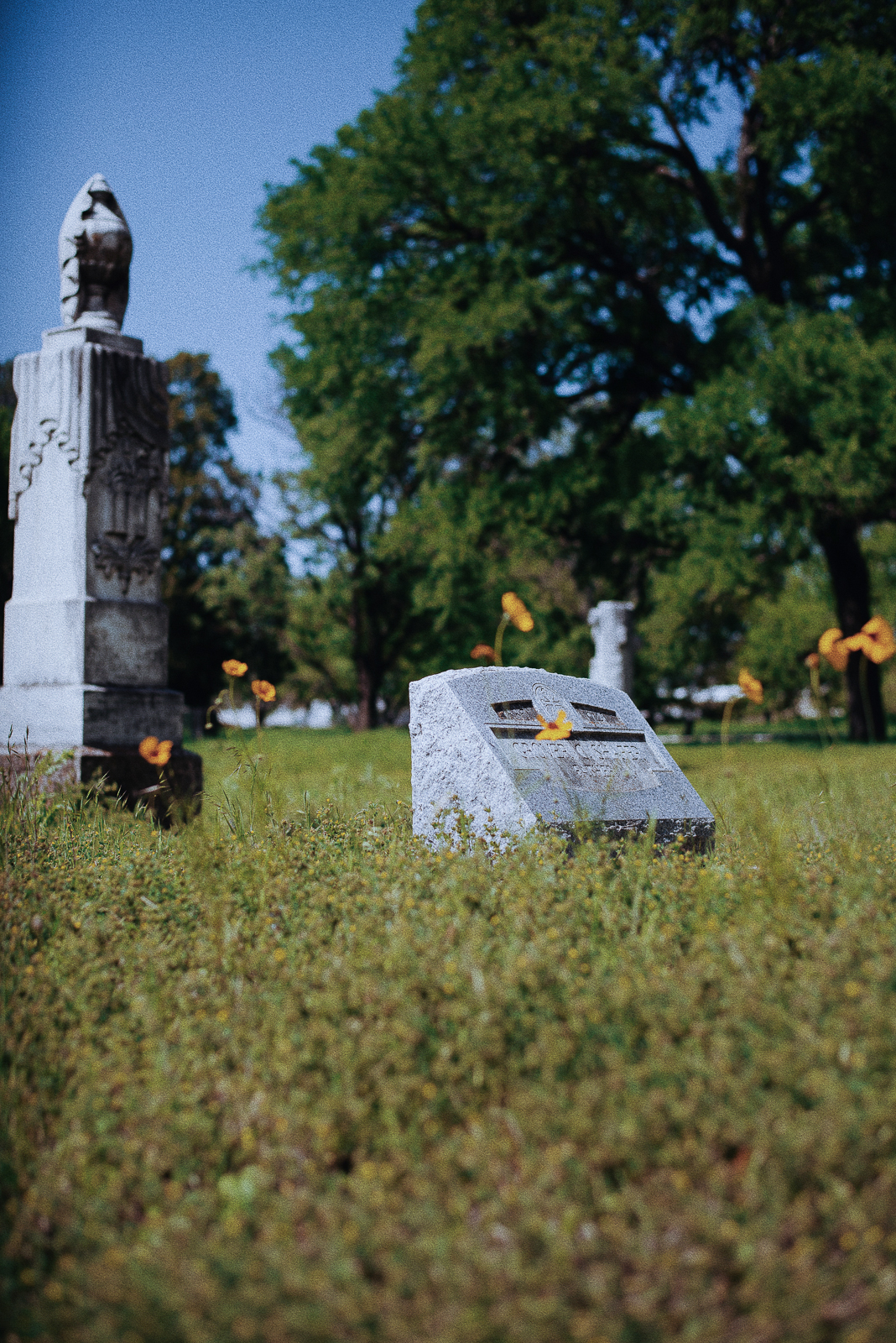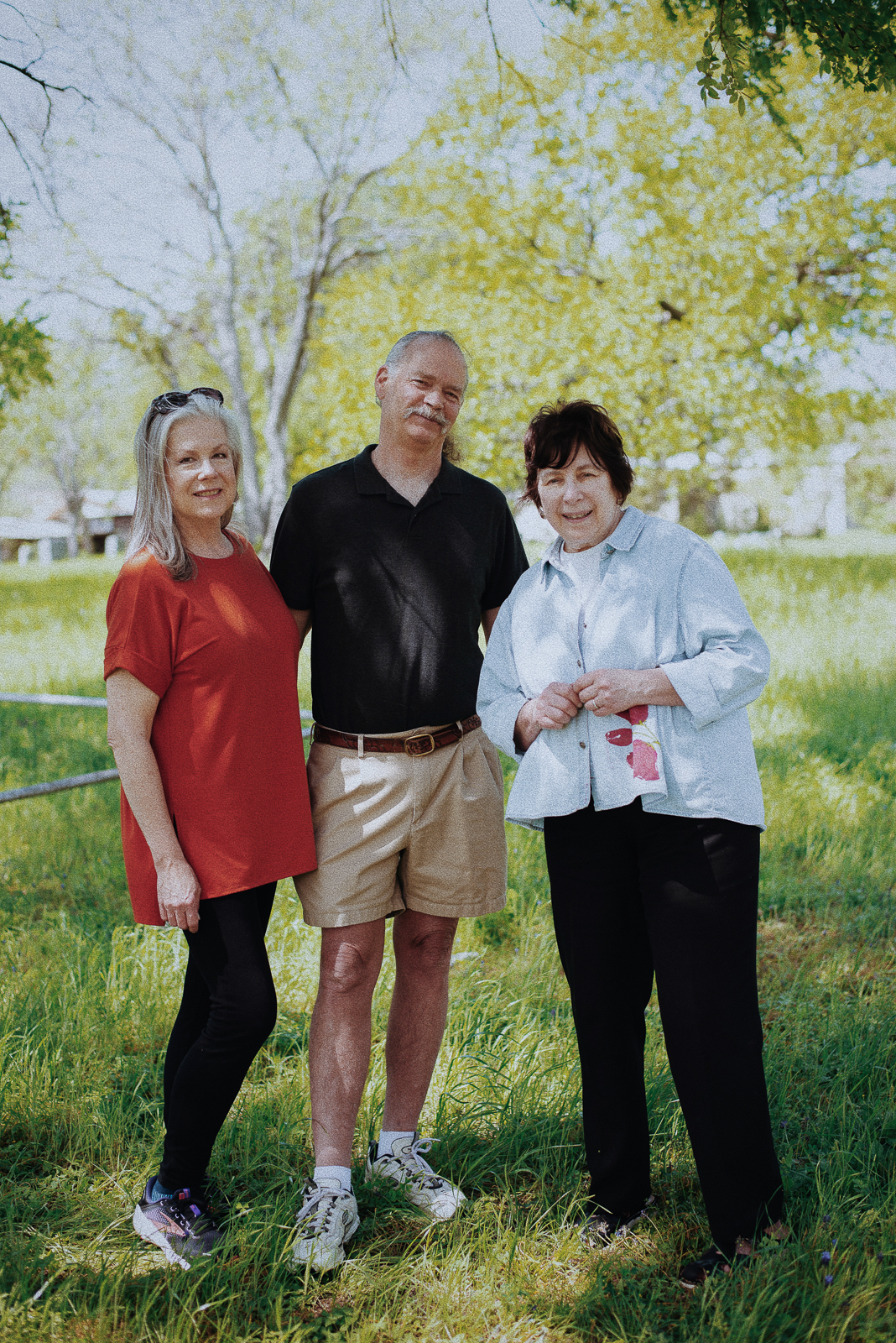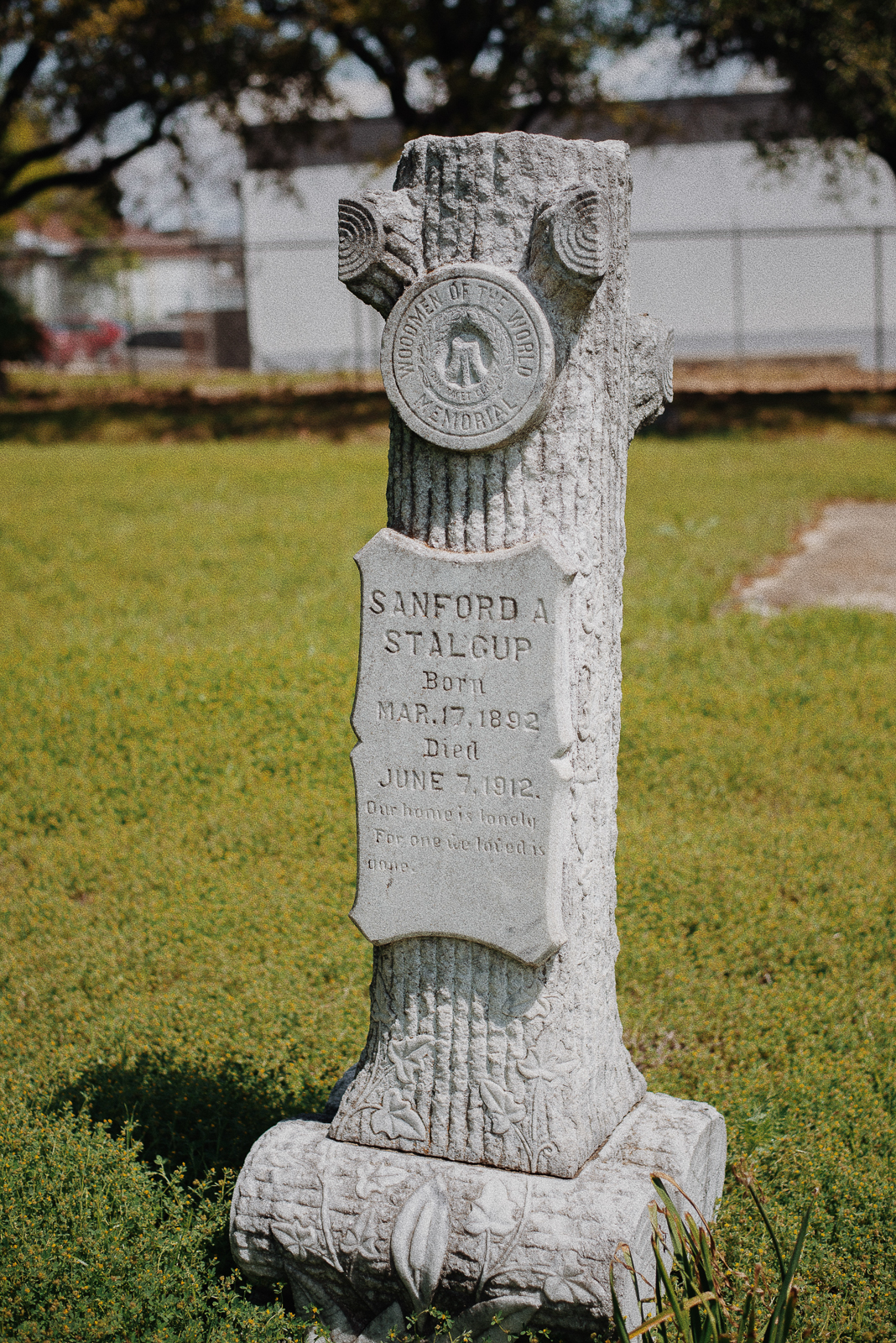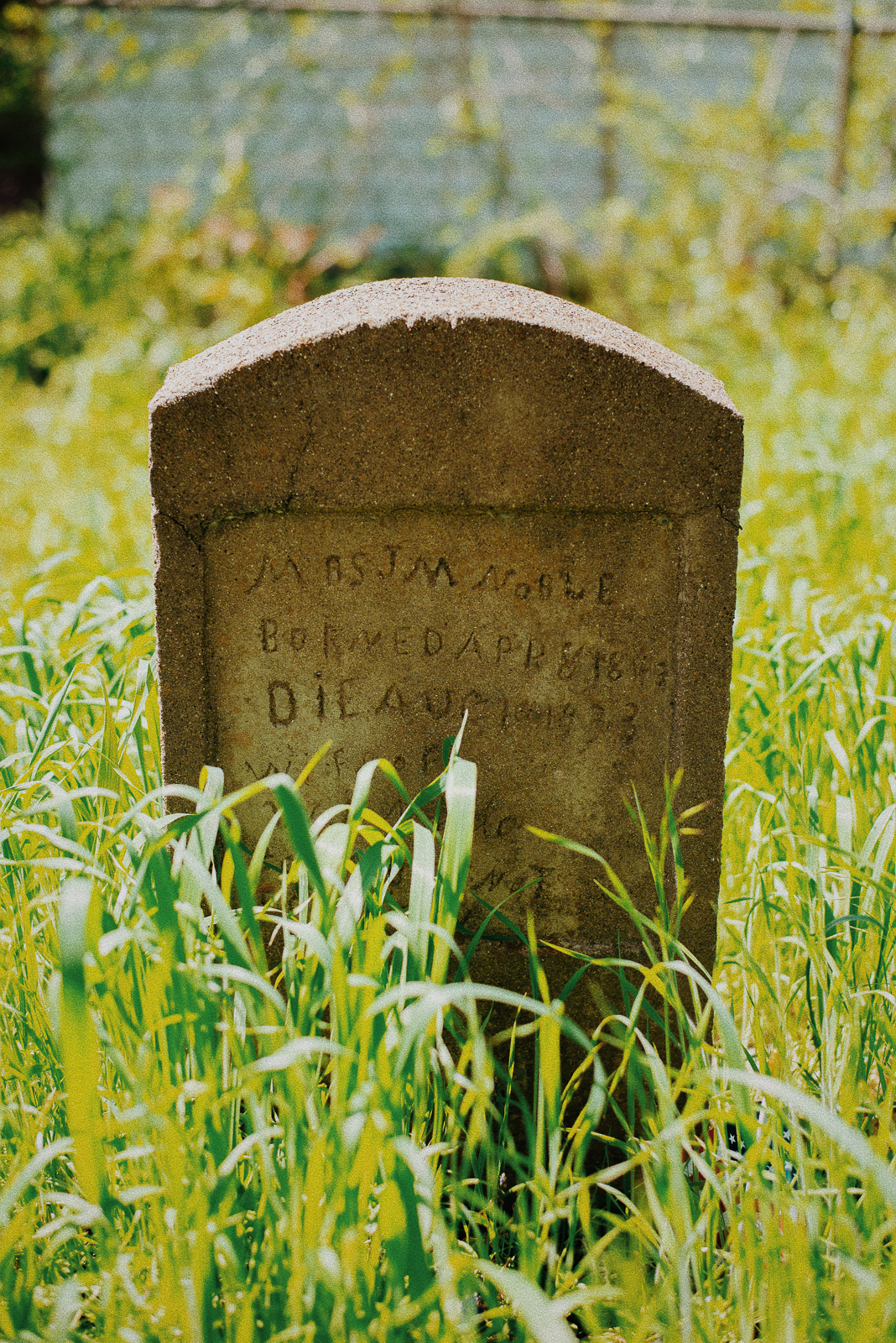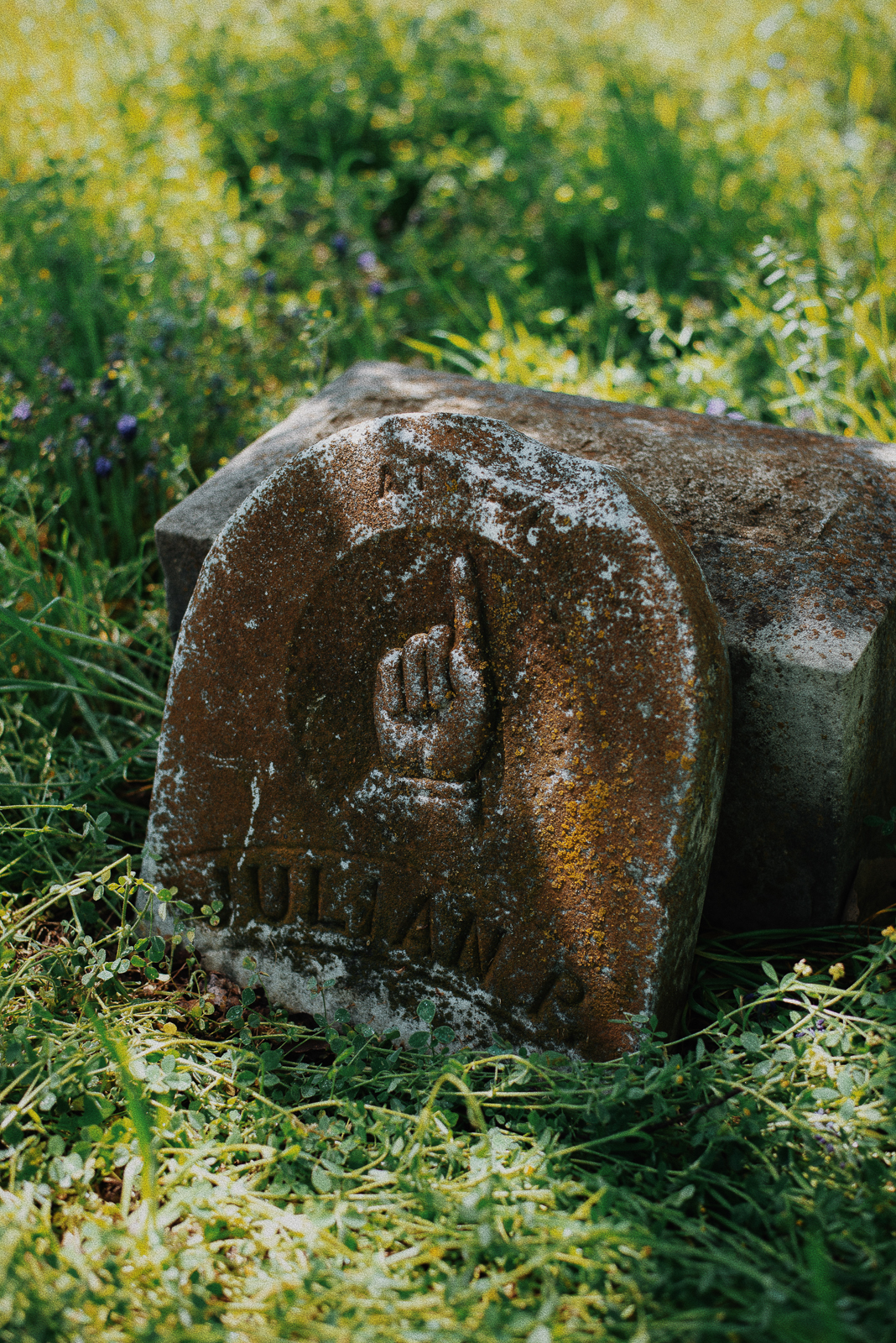It is a windy Friday afternoon when a family from Colorado pulls up to the empty Western Heights Cemetery on Fort Worth Avenue and piles out of their car.
As they make their way through the cemetery’s tall grass, a second car full of women from Tennessee pulls up. The women follow a similar path to the family, who now stand huddled around a grave on the far side of the land.
The grave in question belongs to Clyde Barrow. (His brother, Marvin, is buried beside him and the two share a headstone.)
Red carnations, empty liquor bottles, a joint and a bullet have been placed at the gangster’s gravesite by previous visitors, creating a shrine.
“We just came from Bonnie’s grave,” the father of the family from Colorado mentions.
Bonnie Parker, the other half of the infamous gangster duo that was reared in Oak Cliff, is buried at Crown Hill Memorial Park, around 10 miles north of Western Heights.
“That’s where we’re going next!” says one of the women from Tennessee.
Within half an hour, both groups have made their ways back to their cars, and the cemetery stands empty once again.
At the bottom of Barrow’s grave is the inscription “Gone but not forgotten.”
Looking at the broken fencing, unmarked graves and overgrown grass around the small stretch of land, “forgotten” is exactly how the small group of volunteers who have dedicated themselves to restoring the cemetery would describe it.
The orphan cemetery
Graves in the Western Heights Cemetery date back as far as the 1850s.
Veterans from the Civil War and both world wars are buried there. One gravestone claims to be the resting place of the “first white girl born and died in Dallas County.”
Several marble gravestones are carved into wooden tree trunks, designating a member of the Woodman of the World life insurance organization which provided members with the unique grave markers until the 1920s.
In the northeastern corner, the founders of the cemetery are buried beneath tall, white stones.
Louise Herfel, a longtime Oak Cliff resident and member of the Fort Worth Avenue Development Group, has been one of the leading volunteers in restoring and preserving the cemetery.
She became interested in cemeteries years ago, when she and her husband, Tim, toured several in the city. Louise realized that the spaces were historical portals that deserved to be preserved.
“Seeing how long ago the graves are dated and then seeing who these people were? Seeing the two founders of the cemetery buried here…” Louise says. “(Dallas) wasn’t always like this. This was prairie land and they came through here and decided to build. To me, it’s crazy.”
Cemeteries are not usually managed by cities or counties. Instead, a church or a specific founder will oversee the logistics and finances. If that founder dies, or the church closes, the graveyard often becomes abandoned.
After nearly 200 years of changing ownership, the Western Heights Cemetery is now an “orphan.”
Louise says she and Tim both felt compelled to help out at the cemetery after Deborah Carpenter, who was a member of the FWADG board before serving as the District 6 city plan commissioner, brought the cemetery to the attention of the board.
Tim, treasurer of the FWADG, felt “somebody needed to take ownership” of the cemetery.
When Tim walks through the cemetery, he sees a list of tasks that need to be addressed.
“There is a lot of catchup to do,” Tim says. “Right now we are getting the troops organized.”
He makes mental notes of where tree branches are dipping dangerously low, railings that are broken, sections of fencing that are missing, and, of course, the grass that seems to grow as fast as anyone can mow.
Keeping the grass cut is one of the biggest costs associated with cemetery upkeep, totaling thousands of dollars a year. Louise says that “keeping the grass cut” is the equivalent of a business “keeping the lights on.”
“When we started seeing how the cemetery is in such disrepair that’s when it was like let’s do a fundraiser, this is ridiculous,” Louise says. “It’s kind of mushroomed into we’re gonna go ahead and try to take care of it as much as we can and bring it to a level of glory that I don’t think it’s ever seen.”
The treasure hunt
The beginnings of a new life for the cemetery are currently underway.
A master landscape plan has been put together by Bryce Arrington, imagining what the cemetery could look like.
Last October, the development group hosted a fundraiser selling bricks to pave a path.
But still, there is a laundry list of things that need to be done to whip the cemetery into shape.
One major challenge is that no one is quite sure exactly where there are people buried. Louise says that when people could not afford a gravemarker they were simply buried without one, so imaging will need to be done to ensure that construction is not done over any grave sites.
That imaging will cost thousands of dollars, and Louise says that the rocky terrain might keep the cameras from working. A specialist will have to come and test a sample of the site to make sure that the expensive process will be worthwhile.
From gravesites of Confederate soldiers to those of Dallas pioneers, Katherine Homan — a retired U.S. history teacher and president of the FWADG — describes the cemetery as “a backdoor way of learning history.”
Several grave markers are dated as recently as 2015 and 2017, but the volunteers have not been able to figure out how those people came to be buried in the cemetery. There is not a manager or funeral home associated with the yard; it is as if the graves appeared out of thin air.
Louise, who feels a special connection with graves that designate veterans and graves that were hand carved by family members who couldn’t afford a traditional inscription, says she has worked to find descendants who may otherwise have no idea a family member is buried in the cemetery.
“Somebody needs to be responsible for these headstones. Somebody needs to be responsible for these folks,” Louise says. “It’d be great to get the family members involved with helping us out but regardless, this is in my backyard.”
Homan says the process of trying to track down gravesites and records pertaining to the cemetery has been similar to a “treasure hunt.”
“We don’t even know what treasures there are that we want to take care of, and that we want to preserve,” Homan says. “When people come here, they know they’re coming for (Clyde), but there’s so much more.”
Eventually, Louise hopes to see the cemetery look like the “crown jewel” she feels it is. New landscaping, new lighting and safer and updated paving will eventually bring the space into the modern world.
And, the group plans to install cameras.
The gangster’s grave
Vandalism has been a problem at the cemetery in the past, as has dealing with intruders, who are often just rowdy party-goers who feel emboldened while visiting Clyde Barrow’s gravesite.
It is not uncommon to find empty alcohol containers and other evidence of partying littering the area around his grave.
Despite that, it is clear that there is tourist appeal at the cemetery.
When people visit Dallas, they first want to see the landmarks surrounding the JFK assassination, but the landmarks associated with Bonnie and Clyde are often the second stop, Homan says.
“This, to me, is an untapped resource and something that the city is completely ignoring and missing out on capitalizing on,” Homan says. “It’s amazing how the city has just been blind to what we have here.”
The FWADG has also been instrumental in supporting the beginning steps of relocating Bonnie’s grave.
When the couple was first killed, Bonnie’s mother refused to let Bonnie be buried next to Clyde. Descendants of Bonnie, however, are now in support of reuniting the lovers, and efforts to bring Bonnie to Western Heights are underway.
“There’s a plot over there for her that Clyde’s father purchased way back when they died, so one day she’ll be there,” Louise says.
There has been some pushback about the relocation from the cemetery Bonnie is currently buried in, Louise says, because they do not want to miss out on the tourism her grave brings.
While Clyde Barrow’s grave brings tourist attention to the cemetery, the volunteers see each headstone as one worthy of care and attention.
Tim says the group would “take care of (the cemetery) no matter who is buried there.”
The FWADG has not officially taken ownership of the cemetery.
As far as documentation goes, it is still an orphan, and still technically abandoned. Louise, Tim, Homan and their fleet of volunteers are simply trying to show it hasn’t been forgotten.

